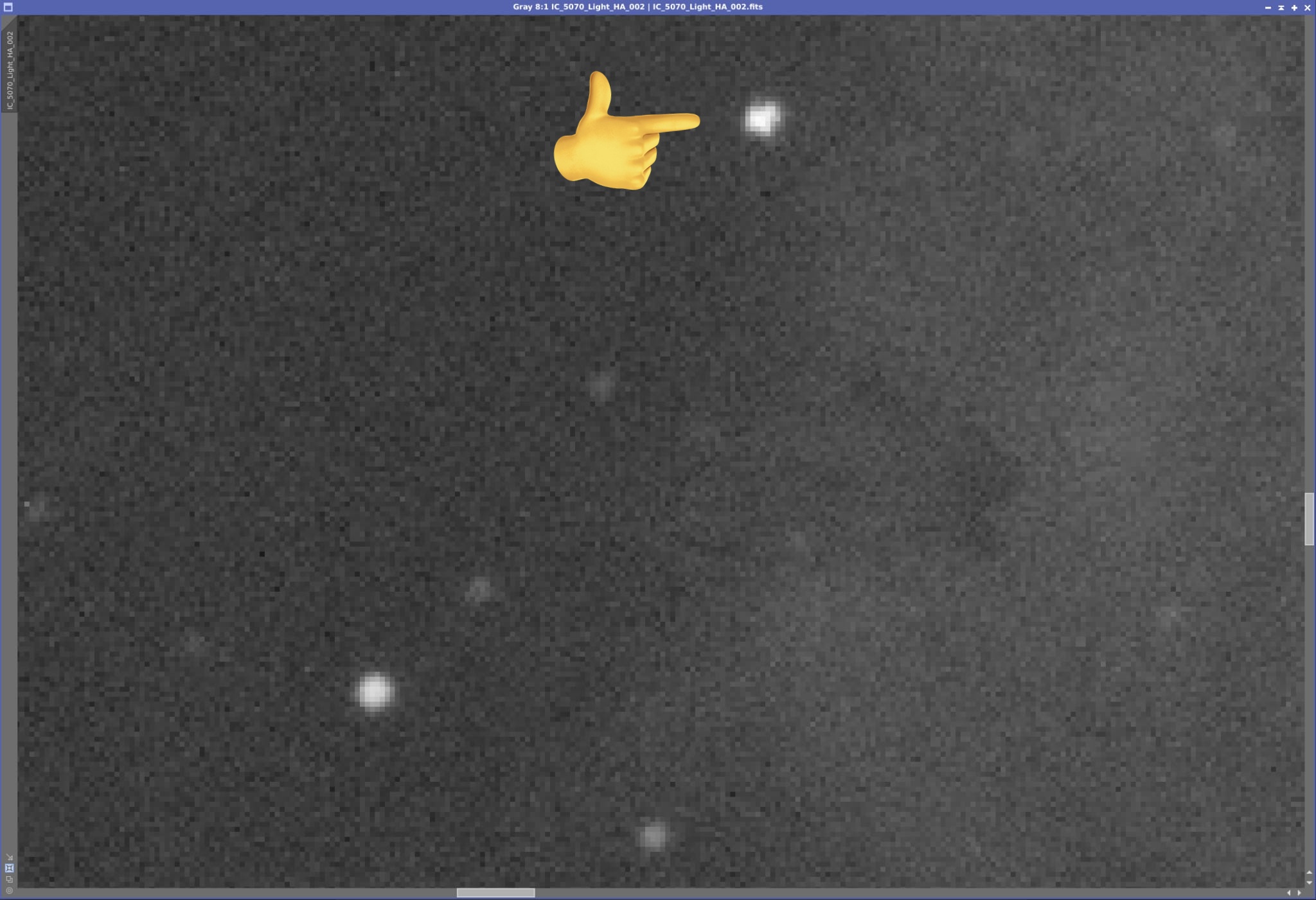Dear forum,
I did first light on my new refractor (Takahashi FSQ-106edx4, camera ZWO asi294mm, Baader Ha 7nm filter). I have a lot of issues still (late nights, a lot of other things) with focuser and also auto-guiding, so no final image yet But first few images were 5-minute subs with hydrogen alpha on Pelican Nebula.
But first few images were 5-minute subs with hydrogen alpha on Pelican Nebula.
I am quite happy with them (not other filters and full project yet, quite defocused etc etc ). But I am wondering if forum would know what is happening on 2nd sub. There is additional star that is not there on 1st, 3rd or any other out of 18 frames I did in that hour and half:
). But I am wondering if forum would know what is happening on 2nd sub. There is additional star that is not there on 1st, 3rd or any other out of 18 frames I did in that hour and half:

I hope it is visible, it stuck out quite obviously when I did blink in PixInsight. One can see normal satellite trails but this star is there only for 1 5-minute sub. Any idea what could it be?
Zoomed in picture shows the star is a little bit deformed (in the frame with other lower bright star for comparison):

I did first light on my new refractor (Takahashi FSQ-106edx4, camera ZWO asi294mm, Baader Ha 7nm filter). I have a lot of issues still (late nights, a lot of other things) with focuser and also auto-guiding, so no final image yet
I am quite happy with them (not other filters and full project yet, quite defocused etc etc

I hope it is visible, it stuck out quite obviously when I did blink in PixInsight. One can see normal satellite trails but this star is there only for 1 5-minute sub. Any idea what could it be?
Zoomed in picture shows the star is a little bit deformed (in the frame with other lower bright star for comparison):

